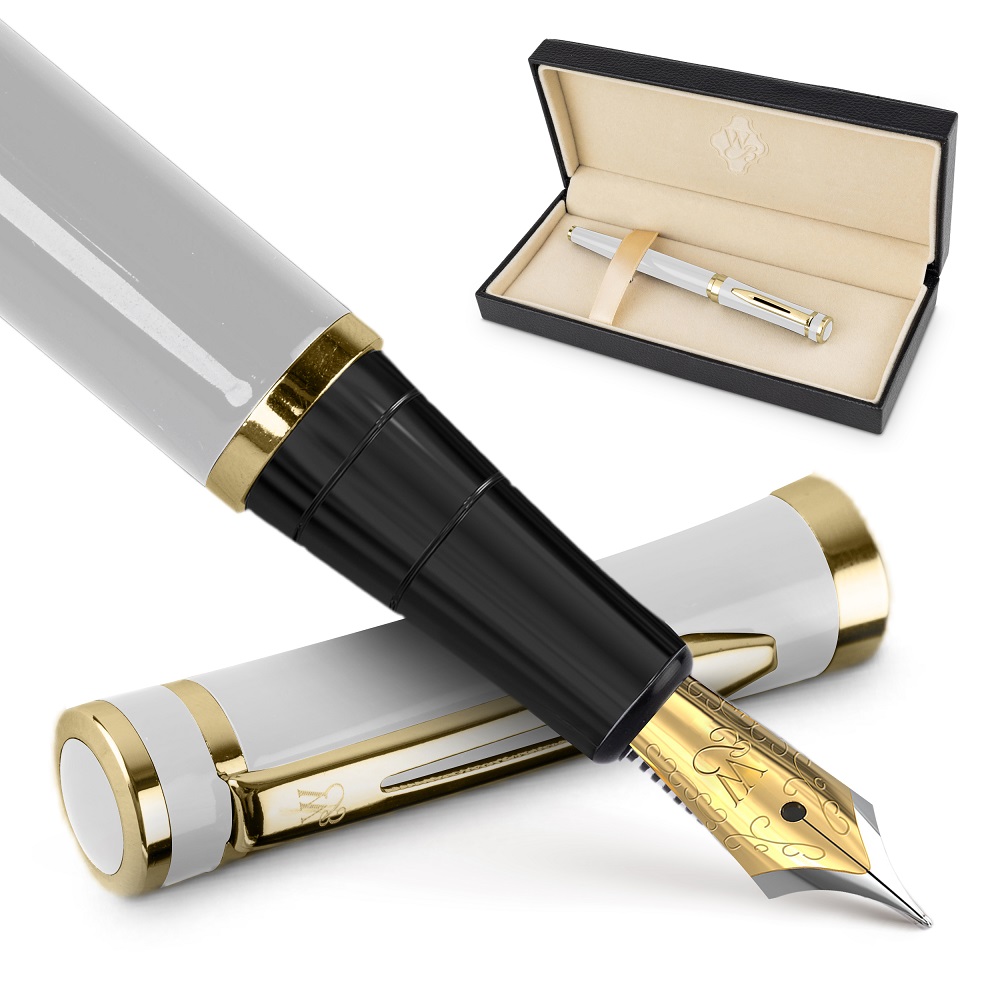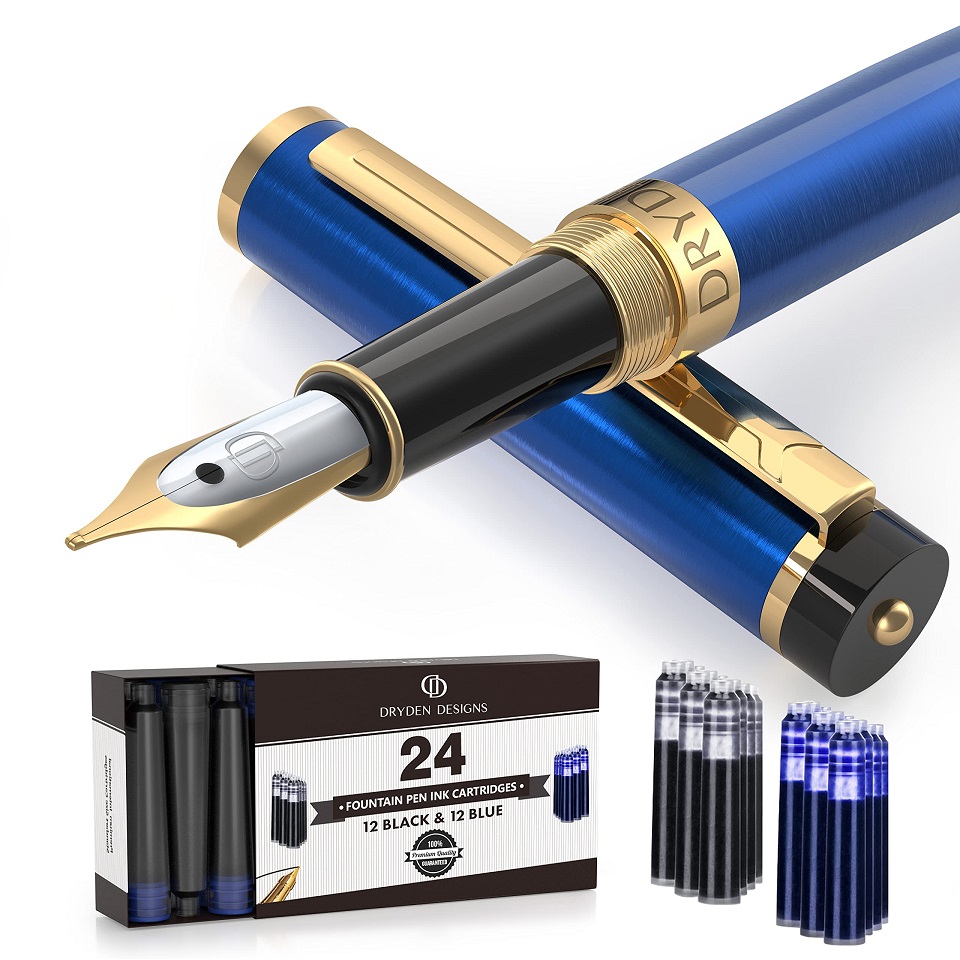Imtroduction
Fountain pens have transcended mere functionality to become symbols of individual expression and artistic flair. In today’s digital age, where typing often takes precedence over handwriting, the fountain pen maintains its allure by offering a tactile and personal writing experience. This article delves into the history, mechanics, and culture surrounding the fountain pen, as well as its resurgence in popularity among enthusiasts worldwide.
The Historical Journey of Fountain Pens
The Rise and Evolution
The story of the fountain pen begins long before its invention, rooted in the human desire for efficient and elegant writing tools. Well before fountain pens came into existence, quills dominated writing instruments. People in ancient societies used reeds and quills to put ink on paper. These tools required frequent dipping into ink, making writing both tedious and time-consuming.
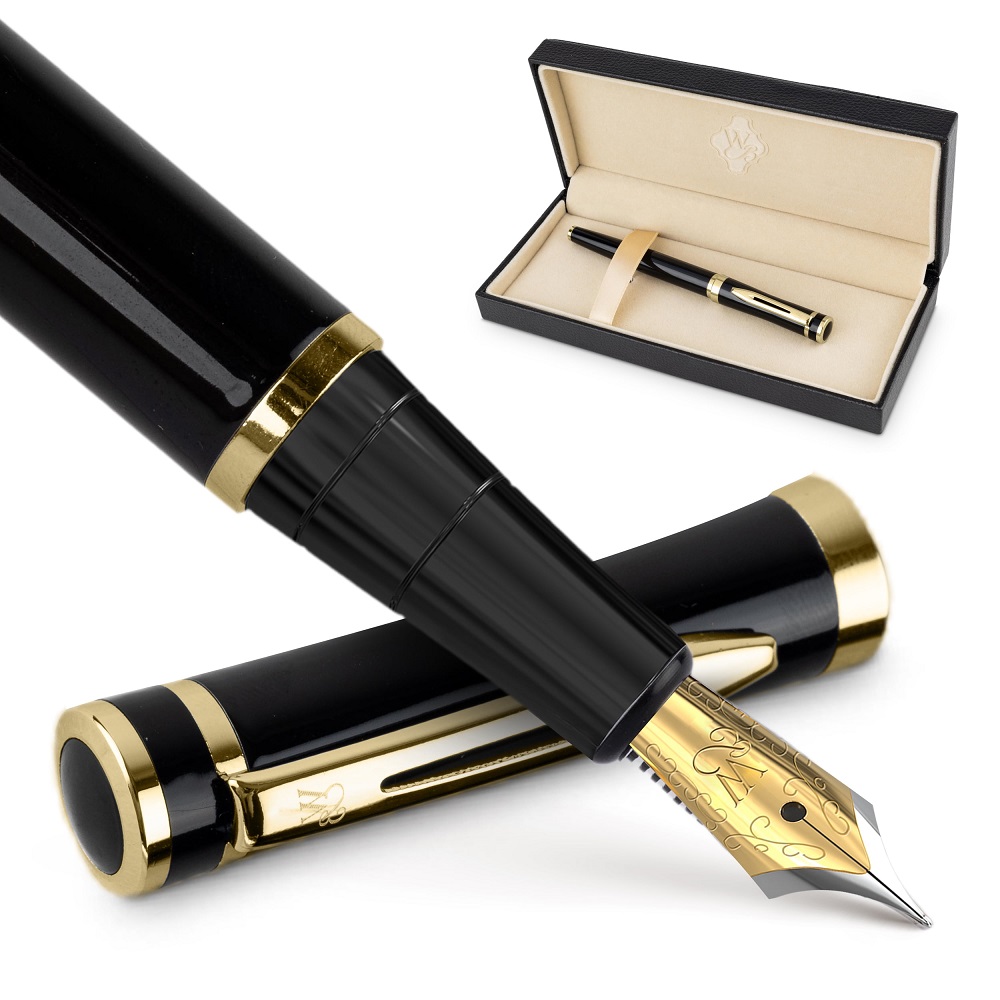
As civilizations evolved, so did the need for a more advanced writing instrument. The earliest references to a fountain pen-like tool appear as far back as the 10th century. The Egyptian Caliph, Ma’ād al-Mu’izz, reportedly commissioned a pen that wouldn’t stain his hands or garments, which is one of the earliest recorded mentions of a fountain pen.
The modern fountain pen, however, began to take shape in the 19th century. Innovations in material, design, and manufacturing led to the production of more reliable and efficient pens. The creation of more sophisticated ink delivery systems was crucial. Lewis Waterman, in 1884, patented what many consider the first true fountain pen. Waterman’s invention addressed ink overflow issues with a feed system that regulated ink flow, making writing smooth and uninterrupted.
Throughout the 20th century, the fountain pen underwent constant improvements. Manufacturers like Parker, Sheaffer, and Montblanc emerged, each bringing unique contributions to the pen’s design and functionality. The Parker 51, celebrated for its innovative design, became one of the best-selling pens of its time. Its success marked the fountain pen’s transformation from a practical tool into a luxury item and a status symbol.
The Materials and Craftsmanship
Ranging from sleek and simple to ornately intricate, fountain pens are crafted from a variety of materials including plastic, resin, metal, and precious materials like gold and platinum. The choice of material greatly influences the pen’s weight, balance, and feel, thus impacting the overall writing experience.
Nib materials also play a pivotal role in determining a pen’s characteristics. Commonly made from stainless steel or gold, nibs come in various shapes and sizes, each offering a different writing experience. Steel nibs provide more rigidity, while gold nibs often offer more flexibility, enhancing the expressiveness of the writing.
The craftsmanship involved in creating a fountain pen often reflects the meticulous artistry of the individuals or companies behind them. The production of fine fountain pens requires skilled artisans, especially for high-end models that feature hand-finished metalwork or enamel designs. This meticulous attention to detail ensures each pen is not only a tool but also an art piece.
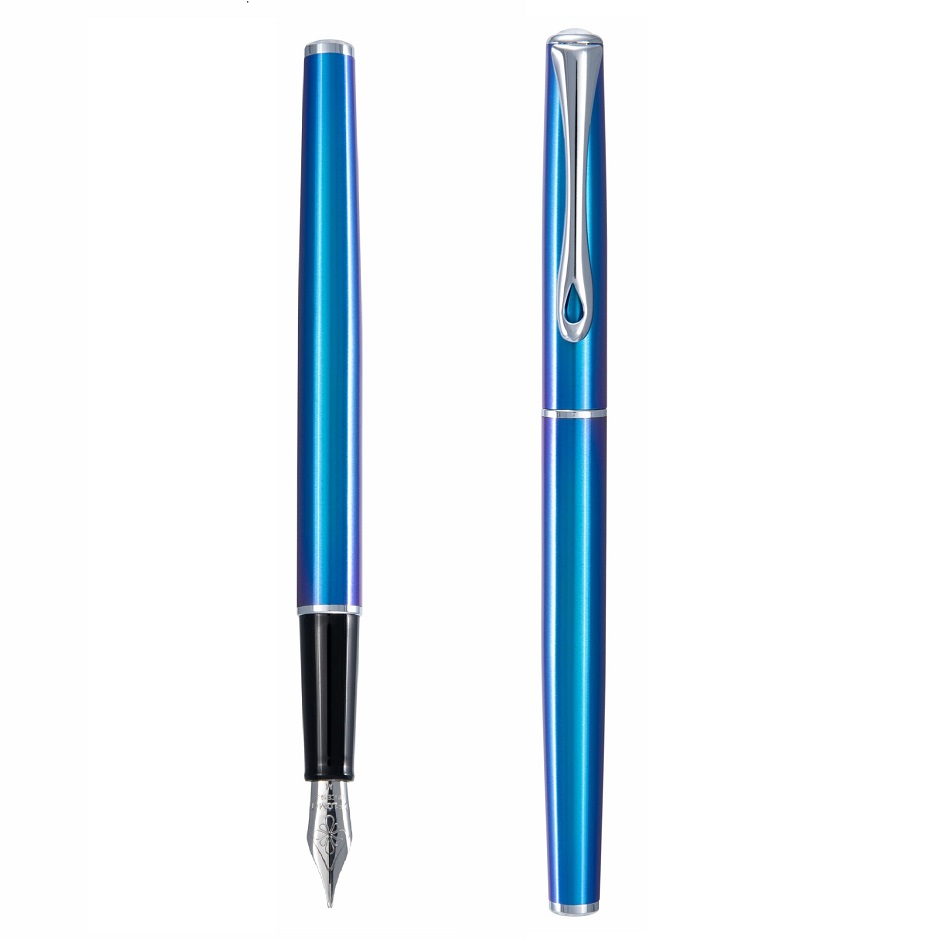
Understanding the Mechanics of Fountain Pens
The Nib: Heart of the Fountain Pen
The nib, often seen as the most defining feature of a fountain pen, significantly impacts the writing experience. It is the point where pen meets paper, and its design influences how ink flows onto the page. Nibs come in a variety of sizes, with the most common types being extra-fine, fine, medium, and broad.
Extra-fine nibs produce the thinnest lines, ideal for intricate handwriting or detailed drawing. They are favored by individuals with small handwriting or those desiring precision. Fine nibs are slightly broader but still maintain a degree of precision valuable for note-taking and everyday writing. Medium nibs, producing a wider line, are popular for their smoothness and rich ink flow, making them suitable for most writing tasks. Broad nibs, although less common, are sought after by those who appreciate bold, expressive script, particularly in artistic writing or calligraphy.
Flex nibs, while less common, offer a unique writing experience. Designed to become wider with pressure, they allow for varied line width in a single stroke, highly valued in calligraphy and illustrated text.
Ink Feed System: The Essential Mechanism
Hidden inside the pen lies the feed, an essential component of the fountain pen. The feed acts as a conduit, regulating the flow of ink from the reservoir to the nib. This ensures a consistent and reliable ink supply, preventing flooding or skipping during writing. The classic feed is often made of ebonite, a hard rubber known for its durability and ability to efficiently channel ink.
The feed’s design, coupled with gravity and capillary action, allows the pen to maintain a stable flow. The ink delivery system varies between pens, with cartridge, converter, and piston systems being the most prevalent. Cartridges offer ease and cleanliness, providing pre-filled ink solutions for quick changes. Converters allow users to refill ink manually from an ink bottle, combining the convenience of cartridges with the flexibility of choosing any ink color. Piston fillers, typically found in higher-end pens, involve a built-in mechanism to draw ink directly into the pen, offering a larger ink capacity and long-term use.
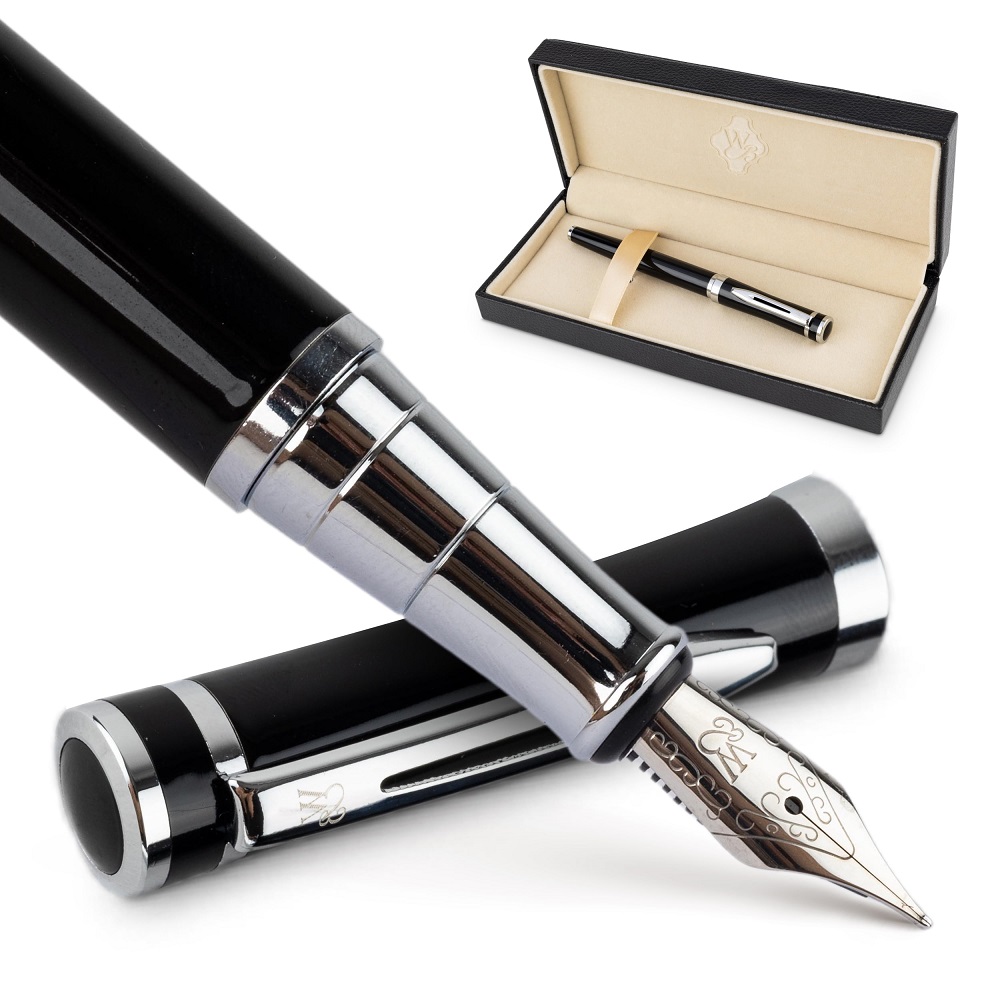
Body and Barrel: Form Meets Function
The body of a fountain pen ties together functionality and aesthetics. Made from various materials such as plastic, metal, or celluloid, the barrel’s design impacts the pen’s weight and balance, both crucial for comfortable writing.
The grip section, often ergonomically designed, allows users to hold the pen comfortably for extended periods. This part is frequently crafted with special textures or contours to enhance grip and prevent slipping.
Unique designs often incorporate clip mechanisms, allowing the pen to be conveniently carried in pockets or notebooks. The clip itself is sometimes embellished, contributing to the pen’s overall design and providing functional utility.
The Cultural and Personal Resonance of Fountain Pens
The Fountain Pen Community
There exists a vibrant global community of fountain pen enthusiasts and collectors who passionately engage with their pens. This community significantly contributes to the enduring popularity of fountain pens, transforming them from mere writing instruments into cherished collectibles and conversation pieces.
Pen shows, online forums, and social media groups serve as platforms where aficionados discuss their collections and share experiences. In these spaces, enthusiasts exchange valuable insights on pen care, ink preferences, and the subtleties of nib adjustments. This exchange of information not only educates newcomers but also fosters a sense of belonging among pen lovers.
Many enthusiasts enjoy restoring vintage pens, preserving a piece of history while experiencing the craftsmanship of bygone eras. This activity brings satisfaction and a deep appreciation for the engineering and artistry of earlier fountain pen designs.
The Appeal of Analog in a Digital Age
In an era dominated by digital communication, the analog appeal of fountain pens offers a counterbalance. Writing with a fountain pen encourages mindfulness and deliberate action, providing a physical connection to the words being crafted. This tactile engagement often leads to a more thoughtful, personal interaction with the written word, a contrast to the rapid-fire, often detached nature of digital writing.
The aesthetic qualities inherent in fountain pen use—ranging from the ink’s shading and sheen to the varied line widths produced—lend themselves to personal expression. Enthusiasts revel in the uniqueness that a fountain pen brings to their handwriting, often finding satisfaction in the imperfections and individuality that come with manual writing.
Furthermore, fountain pens frequently become personalized items of sentimental value. Given the durable nature of well-crafted pens, they often accompany their owners for a lifetime, absorbing memories shared over years of use. This sense of history, combined with the ability to tailor the writing experience to one’s liking through nib exchanges and ink varieties, makes using a fountain pen a richly rewarding experience.
The Resurgence and Future of Fountain Pens
Modern Renaissance
Despite the dominance of digital communication, fountain pens have seen a resurgence in popularity over the past few decades. This renewed interest is fueled in part by the growing artisanal movement, which celebrates craftsmanship, quality, and a return to traditional methods.
Contemporary fountain pen companies leverage the marriage of technology and traditional craftsmanship to produce pens that are not only beautiful but engineered for superior performance. Limited edition and custom-made pens attract both collectors and users seeking unique, personal artifacts.
The democratization of the pen market has also contributed significantly. A surge in affordable options has brought fountain pens to new audiences, allowing more individuals to experience the joy of quality writing instruments. This accessibility has introduced the tool’s allure to younger generations, ensuring the fountain pen’s enduring appeal.
Towards Sustainable Practices
The fountain pen’s reemergence coincides with an increasing awareness of environmental issues. Unlike their disposable counterparts, fountain pens offer a sustainable alternative for writing. Their refillable nature significantly reduces plastic waste associated with disposable pens. In addition, the durability of well-made fountain pens means fewer replacements over the lifetime of the pen, contributing further to sustainability.
Manufacturers are increasingly turning towards sustainable practices in materials and production processes. Innovations such as biodegradable inks and recyclable or sustainably sourced materials contribute to reduced environmental impact. The growing eco-consciousness among consumers supports these shifts, aligning the fountain pen industry with broader sustainability goals.
Technological Integration
While the fountain pen remains a bastion of analog writing, technology plays an evolving role in its continuing enjoyment and functionality. Digital tools enable the creation of virtual communities where knowledge and enthusiasm for fountain pens are shared. Online retailers, reviews, and tutorials make fountain pen culture accessible worldwide.
Additionally, some manufacturers are exploring digital integration, developing smart pens designed to digitize handwritten notes. These innovations blend the tactile joy of writing with a fountain pen with the convenience of digital storage and sharing, meeting the needs of the modern writer.
Conclusion
In sum, as the fountain pen continues to evolve, it stands as a testament to enduring craftsmanship, personal expression, and cultural legacy. The intersection of tradition and innovation ensures that this elegant writing instrument remains relevant and cherished for generations to come.
